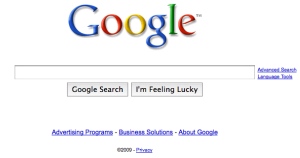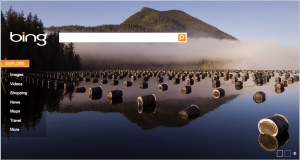Two sides of an equation, or perhaps mirror images. Narcissus bent over the glimmering pool of water trying to catch a glimpse. CRM and VRM attempt hyperrealist representations of humanity. There’s a reduced set of data about a person that describes their propensity to transact in a certain way. The vendor keeps this record in their own private, secure space; constantly sifting through the corpus of data looking for patterns that might change the probabilities. The vendor expends a measured amount of energy nudging the humans represented by each data record toward a configuration of traits that tumble over into a transaction.
Reading Zadie Smith‘s ruminations on the film “The Social Network” in the New York Review, I was particularly interested in the section where she begins to weave the thoughts of Jaron Lanier into the picture:
Lanier is interested in the ways in which people ‘reduce themselves’ in order to make a computer’s description of them appear more accurate. ‘Information systems,’ he writes, ‘need to have information in order to run, but information underrepresents reality (Zadie’s italics).’ In Lanier’s view, there is no perfect computer analogue for what we call a ‘person.’ In life, we all profess to know this, but when we get online it becomes easy to forget.
Doc Searls’s Vendor Relationship Management project is to some extent a reaction to the phenomena and dominance of Customer Relationship Management. We look at the picture of ourselves coming out of the CRM process and find it unrecognizable. That’s not me, I don’t look like that. The vendor has a secured, private data picture of you with probabilities assigned to the possibility that you’ll become or remain a customer. The vendor’s data picture also outputs a list of nudges that can be deployed against you to move you over into the normalized happy customer data picture.
VRM attempts to reclaim the data picture and house it in the customer’s own private, secure data space. When the desire for a transaction emerges in the customer, she can choose to share some minimal amount of personal data with the vendors who might bid on her services. The result is a rational and efficient collaboration on a transaction.
The rational argument says that the nudges used by vendors, in the form of advertising, are off target. They’re out of context, they miss the mark. They think they know something about me, but constantly make inappropriate offers. This new rational approach does away with the inefficiency of advertising and limits the communication surrounding the transaction to willing partners and consenting adults.
But negotiating the terms of the transaction has always been a rational process. The exchange of capital for goods has been finely honed through the years in the marketplaces of the world. Advertising has both a rational and an irrational component. An exceptional advertisement produces the desire to own a product because of the image, dream or story it draws you into. Irrational desires may outnumber rational desires as a motive for commercial transactions. In the VRM model, you’ve already sold yourself based on some rational criteria you’ve set forth. The vendor, through its advertising, wants in to the conversation taking place before the decision is made, perhaps even before you know whether a desire is present.
This irrational element that draws desire from the shadows of the unconscious is difficult to encode in a customer database profile. We attempt to capture this with demographics, psychographics and behavior tracking. Correlating other personal/public data streams, geographic data in particular, with private vendor data pictures is the new method generating a groundswell of excitement. As Jeff Jonas puts it, the more pieces of the picture you have the less compute time it’ll take to create a legible image. Social CRM is another way of talking about this, Facebook becomes an extension of the vendor’s CRM record.
So, when we want to reclaim the data picture of ourselves from the CRM machines and move them from the vendor’s part of the cloud to our personal cloud data store, what is it that we have? Do the little shards of data (both present and represented through indirection) that we’ve collected, and release to the chosen few, really represent us any better? Don’t we simply become the CRM vendor who doesn’t understand how to properly represent ourselves. Are we mirror images, VRM and CRM, building representations out of the same materials? And what would it mean if we were actually able to ‘hit the mark?’
Once again here’s Zadie Smith, with an assist from Jaron Lanier:
For most users over 35, Facebook represents only their email accounts turned outward to face the world. A simple tool, not an avatar. We are not embedded in this software in the same way. 1.0 people still instinctively believe, as Lanier has it, that ‘what makes something fully real is that it is impossible to represent it to completion.’ But what if 2.0 people feel their socially networked selves genuinely represent them to completion?
I sense in VRM a desire to get right what is missing from CRM. There’s an idea that by combining the two systems in collaboration, the picture will be completed. We boldly use the Pareto Principle to bridge the gap to completion, 80% becomes 100%; and close to zero becomes zero. We spin up a world without shadows, complete and self contained.
From T.S. Eliot’s The Hollow Men
Between the idea
And the reality
Between the motion
and the act
Falls the Shadow
For Thine is the Kingdom
Between the conception
And the creation
Between the emotion
And the response
Falls the Shadow
Life is very long
Between the desire
And the spasm
Between the potency
And the existence
Between the essence
And the descent
Falls the Shadow
For Thine is the Kingdom
For Thine is
Life is
For Thine is the
This is the way the world ends
This is the way the world ends
This is the way the world ends
Not with a bang but a whimper.







